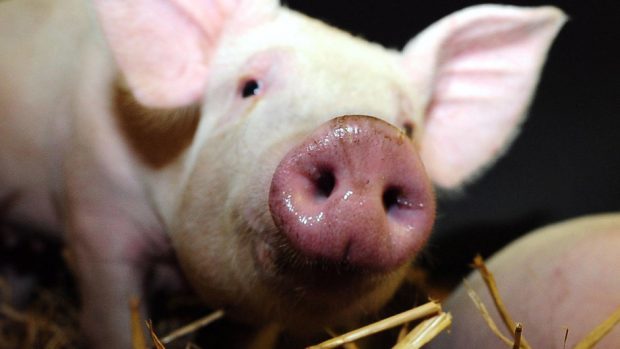A computer game which allows farm staff to learn how to tail dock piglets without having to touch an animal is helping Denmark’s efforts to improve herd health and reduce piglet mortality.
The game, developed by Danish agricultural advisory group SEGES, gives farmers and their workers the chance to learn how to carry out basic operations in a way which limits pain and the risk of infection to animals.
It was produced after researchers discovered that almost a third of piglet deaths were caused by blood poisoning, which is linked to problems associated with tail docking, castration and giving injections.
The game is one of a number of initiatives developed as part of SEGES’ Pig LIFE project, a programme working towards driving Denmark’s piglet mortality down from almost 22% in 2014 to below 20%.
Currently 30 farms are involved in the project, which is looking at different ways of providing training, advice and guidance to farmers and farm staff on how best to care for their youngstock.
“When we looked at the reasons for piglet deaths, 50% were crushed, 20% died from hunger and the rest were due to blood poisoning,” says SEGES’ Dorthe Poulsgård Fransen, who works on the project.
“Farmers assumed the deaths were from crushing, but blood poisoning was significant and we realised we needed to make farmers aware the issue.”
As well as using traditional methods such as farm advisors and vets to work with units to identify problem areas, the project utilises alternative techniques including the computer game and a Facebook page, where farmers share knowledge and ideas.
“We have also ranked each farm’s performance on the Facebook page, and give awards to the top-performing unit,” says Ms Poulsgård Fransen. “We’ve found that competition motivates them to work harder.
“It’s difficult to get people to change their routines: They know how they should do things, but getting them done the right way can be difficult,” she adds. “Giving farmers and their staff an opportunity to learn routines in a different way helps.”
For pig farmer Hans Christian, who runs a 700-sow unit at Nørregaard in Northern Jutland, the project has made a significant impact to his herd’s health and mortality, and his business’ long-term sustainability.
“We had a lot of diarrhoea and problems with a lack of milk from sows,” he says. “Our mortality was at 25% and we thought the main cause was crushing, but it turned out we had problems with constipation and blood poisoning. Some of our piglets were very small and it was hard to help them survive.”
To tackle the issues Christian has worked with an advisor to make a number of changes, including introducing more sugar beet and reducing protein in sow diets – a move which has been good for digestion and increased milk production.
“We also use a lot of straw around the sow and the piglets,” he says. “A lot of other farmers think I’m crazy, but it’s been good for the sows because they make a nest and the piglets haven’t been getting cold.
“We still tail dock, but we change the blade for every litter and make sure we disinfect everything,” he adds. “We’ve also bought a tail cutter which is always totally warm and makes a cleaner job.”
Mortality on the unit is now down to 18%, with still-born piglets down to just 0.9%, both considerably below the project’s average (see table).
“We’ve found that going back to a more natural system has has been very good for us,” Christian says. “The sows take care of the piglets and we take care of the sows.
“Every time you have to do something to a pig is increases the risk, so the more natural the better” he adds. “Eventually I would like to give medicines orally rather than with a needle to limit the risk further.”
Prior to taking part in the project, Christian admits his pig unit was not performing sustainably, but within two years he has seen production increase by 4.5 piglets/sow per year, while his bottom line has improved by DKK631,000 (£72,127) – a saving he will make annually.
“We’ve spent a lot of money on an advisor who has gone through every stage of production with me and the farm’s team of four staff, but it’s definitely been worth it,” he says.
“We couldn’t have done it alone. We needed to learn how to focus our efforts in a way which worked for us and our pigs.”
